Foxglove Covert Interactive Habitat Map
To help you explore what the reserve has to offer, way-marked trails start from the Field Centre.
There are three circular routes to help you Explore and Discover the different aspects of the reserve.
EASY ACCESS TRAIL
Follow the red markers 
Wheelchair and pushchair friendly
1.1km (1⁄2 mile). Allow 45 minutes
Easily accessible, this route takes you
on a journey through Willow Carr to the
wheelchair-friendly hide overlooking the lake.
DISCOVERY TRAIL
Follow the yellow markers 
2.2km (11⁄2 miles). Allow 11⁄2 hours
Discover even more of the reserve as this
route takes you along Risedale Beck via the
heathland and out to the Wetland Hide.
See the description in this guide.
EXPLORER TRAIL
Follow the green markers 
4km (21⁄2 miles). Allow 2 hours
Explore the entire reserve and enjoy all the
habitats that make Foxglove Covert special,
from the moorland with a view over to
Barden Fell, to the semi-ancient woodland
of Risedale Beck and through the Willow Carr
to the lake.
To help protect nesting birds and other
wildlife please keep to the paths, close
gates and ensure children are supervised.
Dogs must be kept on leads at all
times, please clean up after them.
Stout shoes or boots are recommended.
Please take care when walking around
the reserve and observe the rules on
the entrance sign.
Point of Interest. Find out more by Clicking a point
See point details below
Points of Interest on the Foxglove Covert Interactive Habitat Map
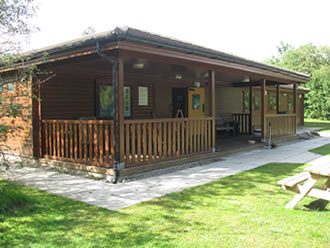
Field Centre
The Field Centre is the hub of the reserve. It is from here that visitors can find out what is happening, which species are being seen and sit down to see the birds in the back garden.
School children use this area as a base when they visit. There is an observational bee hive where you can view the bees within the combs and also see if you can spot the Queen Bee. You will find trail guides to help you and other information to enable you to enjoy your visit.
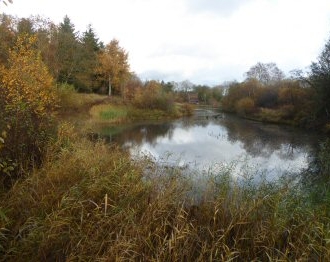
Lake and Hide
The Tower and Easy Access Hides give great views of the lake and its surroundings. The edges of the lake are rich in flowers such as Flag Iris, Water Forget-me-not and Greater Spearwort. Mallard, Tufted Duck, Moorhen and Little Grebe nest here. Kingfishers may be seen feeding upon the small fish.
If you are lucky you, Roe Deer sometimes walk through the Larch plantation to the right or Water Voles swim between the banks of the lake and the islands.
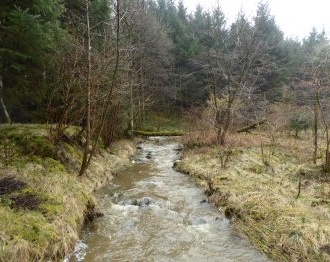
Risedale Beck
A tributary of the River Swale, Risedale Beck runs along the south-eastern side of the reserve. The beck runs through deciduous woodland which has been growing here for at least 400 years. One of the features of this area is the south-facing Hazel coppice. Here in the spring you will find banks of Bluebell, Primrose, Dog Violet and Wood Anemone. A coppice is managed by cutting trees such as Hazel and Willow down to ground level during the winter season. The straight stems which re-grow can be used for a variety of purposes. Coppicing a bank such as this ensures a light, open canopy of leaves, vital for the flora beneath.

Heathland
This small area is rich in plant and insect species including Common Spotted Orchids and Wasp Beetles. Nightjar and Woodcock have bred here in summer. Later in the year the flowering Heather turns the ground purple and bees use the pollen and nectar to make honey. Great-crested Newts breed here every year. The heath was fenced to allow Exmoor Ponies to graze the invasive species, which they do very well!

Wetland
This area was created from a patch of wet moorland in 2009. There is a series of field drains and ditches which, on average, are no deeper than 60cm. Snipe, Redshank, Oystercatcher and Lapwing are seen in the spring. Swallows, Swifts and House Martins swoop over the water catching insects. There is a rich abundance of dragonflies and damselflies including the Broad-bodied Chaser, a species which is extending its range northwards. Frogs, toads and newts can be found everywhere. Marsh Stitchwort, Adder’s Tongue and Marsh Cinquefoil are notable plant species.

Moorland
With views across to Barden Moor this piece of the reserve is grazed by Exmoor Ponies thoughout the winter. There are several spring-fed pools and areas of raised fen which are springy with Sphagnum Moss and are home to Grass of Parnassus, Common Spotted Orchid and the insectivorous Common Butterwort.
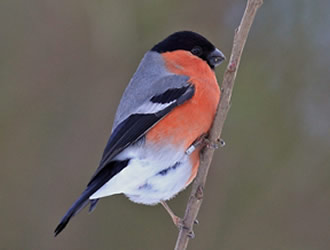
Willow Carr
The Willow Carr is the largest such area in Swaledale. ‘Carr’ is an old Norse word for swamp, which lets you know that this is a very wet area. It is managed by coppicing. As the Willow is regularly cut down open glades and rides are created which warm up and are home to many insects, including butterflies. Because of this the Willow Carr is home to numerous birds such as Chiffchaff, Willow Warbler and Bullfinch. Willow Warblers winter in Africa and return here every year to breed. Because of the ringing scheme we know that individual birds have returned here as many as eight times.
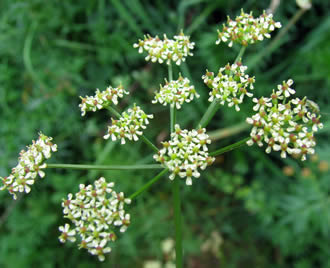
Meadow
There are various small meadows throughout the reserve. Each one has its own unique flora. This meadow behind the Scrapes, in late July, is dominated by Pepper Saxifrage, Tormentil, Knapweed and Devil’s Bit Scabious.
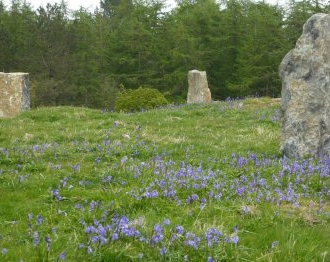
Stone Circle
This was erected in May 2016. It has become a focal point for visitors walking across the moorland path. In the spring Bluebells surround some of the stones.

Plover's Pool
Plover’s Pool was created in February 2016. It has developed into a very special part of the reserve. During the summer it is home to many dragonflies and damselflies. An ideal place for the Hobby, seen during the summer of 2018. Lapwings breed here. House Martins and Swallows drink from the pond as well as hunting for insects.
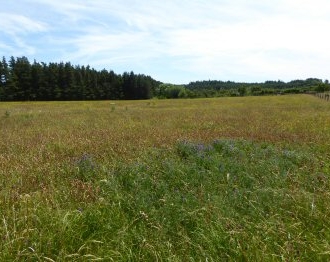
Middle Moor
Originally rough pasture, through grazing with Highland Cattle, sheep, Belted Galloways and careful management, this area is now blossoming as a wildflower/hay meadow. Yellow Rattle, a semi parasitic plant on certain grasses was planted and the range of species has increased. Common Bird’s-foot Trefoil, Rayed Knapweed, Fairy Flax, Cowslip and Common Spotted Orchid are just some of the species thriving.
There are three circular routes to help you Explore and Discover the different aspects of the reserve.
Follow the red markers
Wheelchair and pushchair friendly
1.1km (1⁄2 mile). Allow 45 minutes
Easily accessible, this route takes you on a journey through Willow Carr to the wheelchair-friendly hide overlooking the lake.
Follow the yellow markers
2.2km (11⁄2 miles). Allow 11⁄2 hours
Discover even more of the reserve as this route takes you along Risedale Beck via the heathland and out to the Wetland Hide. See the description in this guide.
Follow the green markers
4km (21⁄2 miles). Allow 2 hours
Explore the entire reserve and enjoy all the habitats that make Foxglove Covert special, from the moorland with a view over to Barden Fell, to the semi-ancient woodland of Risedale Beck and through the Willow Carr to the lake.
Dogs must be kept on leads at all times, please clean up after them. Stout shoes or boots are recommended. Please take care when walking around the reserve and observe the rules on the entrance sign.
Point of Interest. Find out more by Clicking a point
See point details below
Points of Interest on the Foxglove Covert Interactive Habitat Map

Field Centre
The Field Centre is the hub of the reserve. It is from here that visitors can find out what is happening, which species are being seen and sit down to see the birds in the back garden.
School children use this area as a base when they visit. There is an observational bee hive where you can view the bees within the combs and also see if you can spot the Queen Bee. You will find trail guides to help you and other information to enable you to enjoy your visit.

Lake and Hide
The Tower and Easy Access Hides give great views of the lake and its surroundings. The edges of the lake are rich in flowers such as Flag Iris, Water Forget-me-not and Greater Spearwort. Mallard, Tufted Duck, Moorhen and Little Grebe nest here. Kingfishers may be seen feeding upon the small fish.
If you are lucky you, Roe Deer sometimes walk through the Larch plantation to the right or Water Voles swim between the banks of the lake and the islands.

Risedale Beck
A tributary of the River Swale, Risedale Beck runs along the south-eastern side of the reserve. The beck runs through deciduous woodland which has been growing here for at least 400 years. One of the features of this area is the south-facing Hazel coppice. Here in the spring you will find banks of Bluebell, Primrose, Dog Violet and Wood Anemone. A coppice is managed by cutting trees such as Hazel and Willow down to ground level during the winter season. The straight stems which re-grow can be used for a variety of purposes. Coppicing a bank such as this ensures a light, open canopy of leaves, vital for the flora beneath.

Heathland
This small area is rich in plant and insect species including Common Spotted Orchids and Wasp Beetles. Nightjar and Woodcock have bred here in summer. Later in the year the flowering Heather turns the ground purple and bees use the pollen and nectar to make honey. Great-crested Newts breed here every year. The heath was fenced to allow Exmoor Ponies to graze the invasive species, which they do very well!

Wetland
This area was created from a patch of wet moorland in 2009. There is a series of field drains and ditches which, on average, are no deeper than 60cm. Snipe, Redshank, Oystercatcher and Lapwing are seen in the spring. Swallows, Swifts and House Martins swoop over the water catching insects. There is a rich abundance of dragonflies and damselflies including the Broad-bodied Chaser, a species which is extending its range northwards. Frogs, toads and newts can be found everywhere. Marsh Stitchwort, Adder’s Tongue and Marsh Cinquefoil are notable plant species.

Moorland
With views across to Barden Moor this piece of the reserve is grazed by Exmoor Ponies thoughout the winter. There are several spring-fed pools and areas of raised fen which are springy with Sphagnum Moss and are home to Grass of Parnassus, Common Spotted Orchid and the insectivorous Common Butterwort.

Willow Carr
The Willow Carr is the largest such area in Swaledale. ‘Carr’ is an old Norse word for swamp, which lets you know that this is a very wet area. It is managed by coppicing. As the Willow is regularly cut down open glades and rides are created which warm up and are home to many insects, including butterflies. Because of this the Willow Carr is home to numerous birds such as Chiffchaff, Willow Warbler and Bullfinch. Willow Warblers winter in Africa and return here every year to breed. Because of the ringing scheme we know that individual birds have returned here as many as eight times.

Meadow
There are various small meadows throughout the reserve. Each one has its own unique flora. This meadow behind the Scrapes, in late July, is dominated by Pepper Saxifrage, Tormentil, Knapweed and Devil’s Bit Scabious.

Stone Circle
This was erected in May 2016. It has become a focal point for visitors walking across the moorland path. In the spring Bluebells surround some of the stones.

Plover's Pool
Plover’s Pool was created in February 2016. It has developed into a very special part of the reserve. During the summer it is home to many dragonflies and damselflies. An ideal place for the Hobby, seen during the summer of 2018. Lapwings breed here. House Martins and Swallows drink from the pond as well as hunting for insects.

Middle Moor
Originally rough pasture, through grazing with Highland Cattle, sheep, Belted Galloways and careful management, this area is now blossoming as a wildflower/hay meadow. Yellow Rattle, a semi parasitic plant on certain grasses was planted and the range of species has increased. Common Bird’s-foot Trefoil, Rayed Knapweed, Fairy Flax, Cowslip and Common Spotted Orchid are just some of the species thriving.

